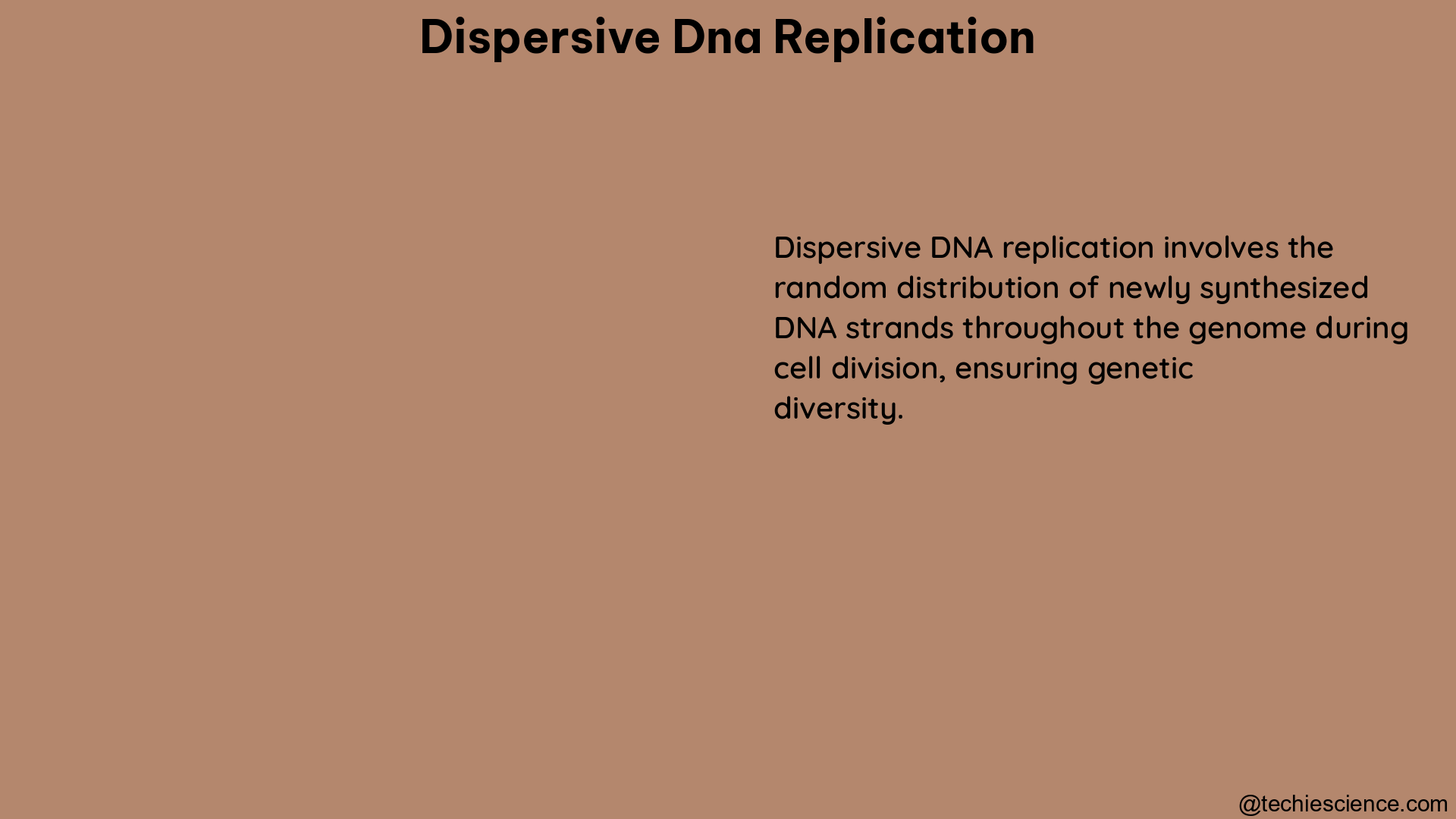Dispersive DNA replication is a hypothetical model of DNA replication that suggests the parental DNA strands break into smaller fragments, which are then randomly distributed among the daughter strands during the replication process. However, this model has been largely discredited by overwhelming experimental evidence, with the semiconservative model of DNA replication being the widely accepted mechanism.
The Meselson-Stahl Experiment: The Cornerstone of DNA Replication
The Meselson-Stahl experiment, conducted in 1958, is widely regarded as the most beautiful and definitive experiment in the field of molecular biology. This landmark study provided direct evidence for the semiconservative model of DNA replication, effectively disproving the dispersive model.
In this experiment, Meselson and Stahl used density labeling with nitrogen-15 (15N) and nitrogen-14 (14N) to track the distribution of parental and daughter DNA molecules in the bacterium Escherichia coli. They observed that after one round of replication, the DNA molecules contained one heavy (15N) and one light (14N) strand, which is the hallmark of the semiconservative model. In contrast, the dispersive model would have resulted in a mixture of heavy and light fragments in both strands, which was not observed in the experiment.
Theoretical Calculations and Experimental Data: Further Evidence Against Dispersive Replication

The theoretical calculations and experimental data presented in Meselson and Stahl’s original paper provide additional strong evidence against the dispersive model of DNA replication. They demonstrated that the concentration distribution of a single macromolecular species in a constant density gradient should be Gaussian, and that the standard deviation of that band is inversely proportional to the square root of the macromolecular weight.
This model was remarkably accurate when tested with homogeneous DNA of known molecular weight from bacteriophage T4. Furthermore, the paper documents the first analysis of the density distribution of DNA containing 5-bromodeoxyuridine (5BU), obtained from T4-infected cultures of E. coli grown in media with this thymine analog. The 5BU-substituted DNA molecules banded at a density of 1.8 g/cm3, whereas those of normal thymine-containing T4 bacteriophage DNA were well separated at 1.7 g/cm3. These data provide further evidence against the dispersive model, as they demonstrate that the DNA molecules maintain their integrity and do not break into smaller fragments during replication.
Dispersive Replication: A Theoretical Concept with No Empirical Support
While dispersive DNA replication is an interesting theoretical concept, there is no measurable, quantifiable data available to support it. The Meselson-Stahl experiment, as well as subsequent experimental and theoretical work, have provided overwhelming evidence for the semiconservative model of DNA replication, which is now the widely accepted mechanism in the scientific community.
The key differences between the dispersive and semiconservative models can be summarized as follows:
| Characteristic | Dispersive Model | Semiconservative Model |
|---|---|---|
| Parental DNA Strands | Break into smaller fragments | Remain intact |
| Distribution of Fragments | Randomly distributed among daughter strands | One parental and one newly synthesized strand in each daughter molecule |
| Experimental Evidence | No measurable, quantifiable data to support | Supported by Meselson-Stahl experiment and subsequent studies |
| Current Acceptance | Largely discredited | Widely accepted |
Conclusion
In conclusion, while the dispersive DNA replication model is an interesting theoretical concept, it has been thoroughly debunked by the overwhelming experimental evidence supporting the semiconservative model of DNA replication. The Meselson-Stahl experiment, along with the detailed theoretical calculations and experimental data presented in their original paper, have firmly established the semiconservative model as the accepted mechanism of DNA replication in the scientific community.
References:
- Meselson, M., Stahl, F. W. (1958). The replication of DNA in Escherichia coli. Proceedings of the National Academy of Sciences, 44(7), 671-682.
- Hanawalt, P. C. (2004). Density matters: The semiconservative replication of DNA. Proceedings of the National Academy of Sciences, 101(52), 17889-17894.
- Meselson, M., Stahl, F. W., & the Replication of DNA: A History of “The Most Beautiful Experiment in Biology” (Yale Univ. Press, New Haven, CT).

Hi…I am Arti Pandey, have a Master’s degree in Biotechnology. I am an academic writer in Lambdageeks and also a beginner Korean learner. I love to explore new cultures, places, and food. I love photography and had a keen interest in creative writing.